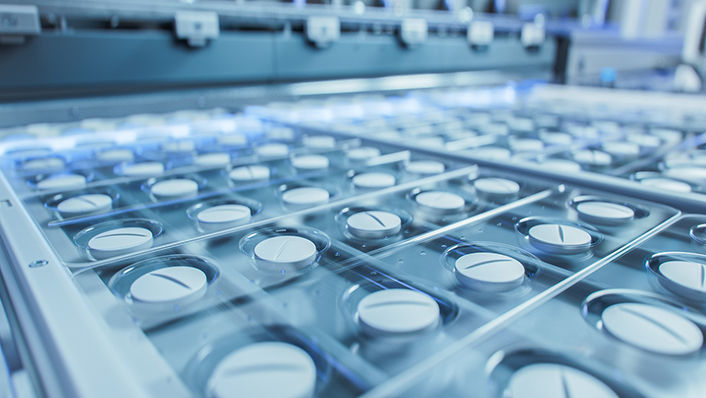How to Achieve Moisture Control in Nutraceutical Tablets

Pharmaceutical product stability is non-negotiable—consumers expect their supplements to deliver consistent benefits from the first dose to the last. Yet, the integrity of oral solid dosage forms can be compromised by even the smallest trace amounts of moisture. Compromising both product efficacy and shelf life, moisture is a silent threat that can cause issues for formulators, tablet manufacturers and nutraceutical companies.
The Hidden Challenge in Tablet Manufacturing
Moisture control is a critical, yet often underestimated, aspect of tablet formulation and production. It is almost inevitable that powders and tablets will be exposed to various sources of moisture from ambient humidity during the manufacturing process. Without proper safeguards, this moisture can impact the formulation, degrade sensitive ingredients over time, and lead to physical defects like caking and discoloration.
Moisture-sensitive active ingredients such as probiotics, vitamins, and botanical extracts are particularly vulnerable. Even trace amounts of humidity can trigger:
- Hydrolysis, which can break down moisture-sensitive drug molecules
- Accelerated oxidation, reducing potency
- Physical defects like tablet softening and powder caking, affecting usability
- Reduced shelf life, leading to product recalls or consumer dissatisfaction
How Can Tablet Manufacturers Overcome the Inherent Moisture Challenges?
To protect tablet integrity, manufacturers should build moisture control into their formulation strategy and production process. Common approaches include using protective packaging such as blister packs or desiccants, adding moisture-resistant coatings, or integrating environmental controls during production.
Another alternative is to use less hygroscopic ingredients or introduce moisture-controlling excipients into the formulation. Very hygroscopic drugs absorb significant moisture and increase their mass by 5% or more under moderate humidity, which impacts both physical and chemical stability.
How to Determine the Right Moisture Control Solution
While these methods offer varying degrees of moisture protection, they come with trade-offs in cost, complexity, and performance. Before turning to costly special packaging, consider advanced formulations with a moisture control excipient that can achieve:
- High moisture absorption capacity
- Compatibility with active ingredients
- Ease of processing and integrating into existing formulations
- Support for tablet compressibility and flowability
Mastering Moisture Control with SYLOID® AL-1 FP Silica
Engineered specifically for moisture-sensitive nutraceuticals, SYLOID® AL-1 FP mesoporous silica acts as a moisture scavenger, absorbing and trapping humidity before it can reach vulnerable actives. Its highly porous structure has a large surface that enables superior moisture absorption, creating a dry microenvironment around moisture-sensitive ingredients. Offering broad compatibility with a wide range of nutraceutical actives, including probiotics and herbal extracts, it can act as a stabilizer and protectant by preventing moisture uptake, safeguarding sensitive APIs and enhancing storage stability.
Whether you're developing chewables, effervescents, or conventional tablets, finding a moisture control solution that integrates seamlessly into your formulation is critical. The ideal excipient should provide a powerful defense against event trace amounts of moisture, enhancing product stability without complicating your formulation or manufacturing process.